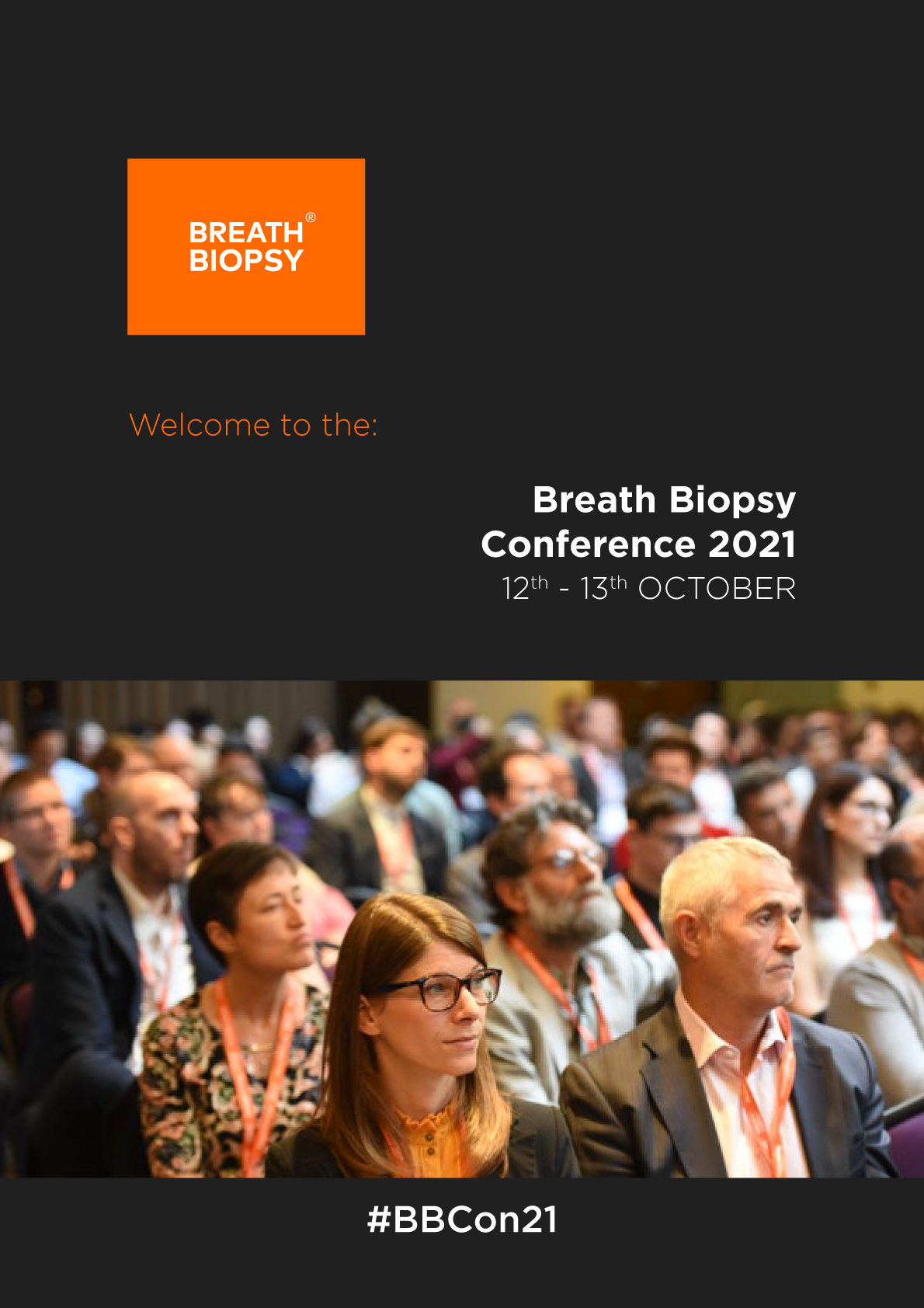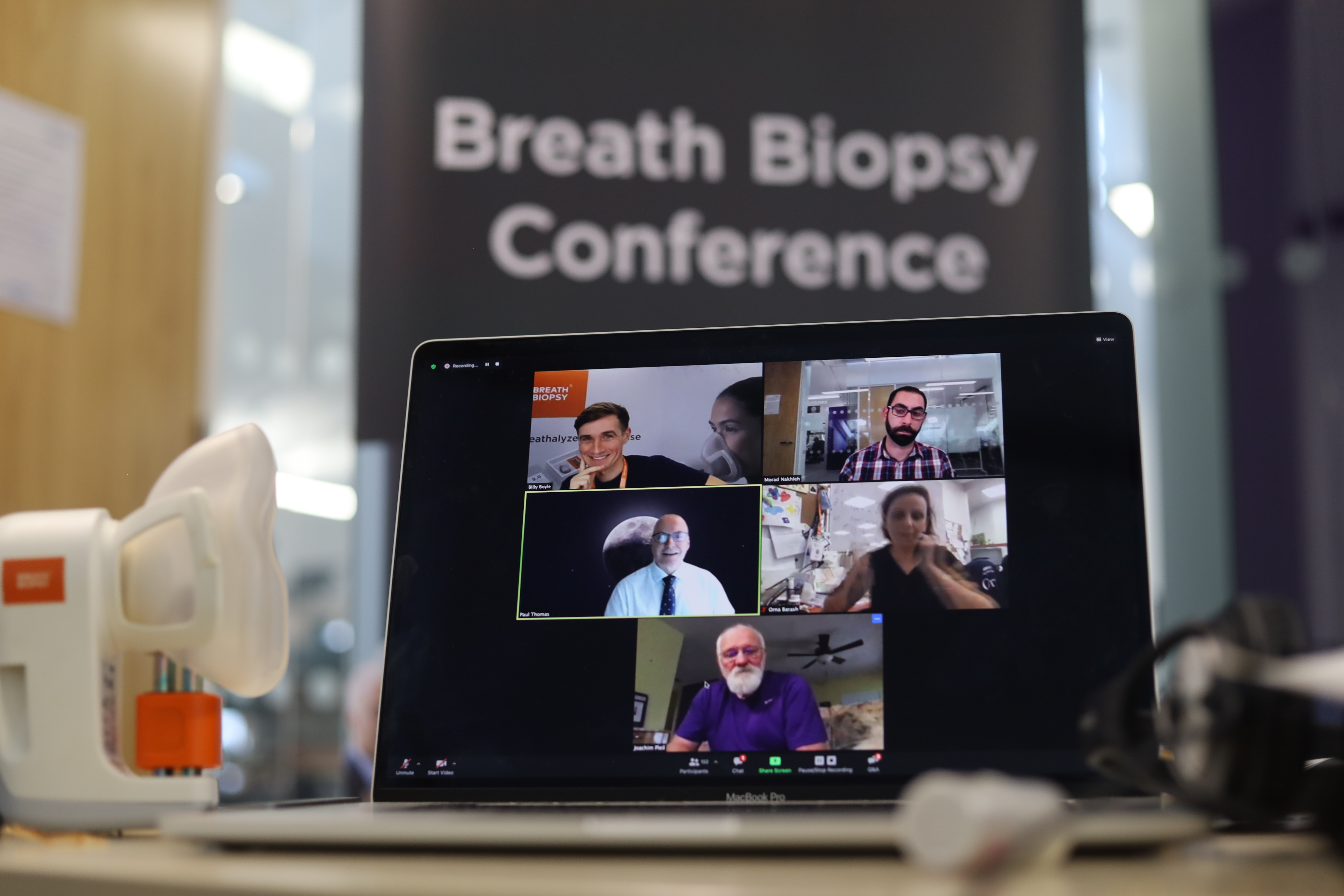Breath Biopsy Conference 2021: Progress through standardization
Published on: 15 Oct 2021
More than 900 members of the global breath research community registered for the fourth annual Breath Biopsy® Conference, which was held online this October. Attendees heard two days of innovative presentations and discussions on the latest advances in breathomics, featuring live Q&As, 18 leading speakers, 15 research posters and a lively expert panel discussion.
A few words from attendees:“Great presentations, great speakers, various and important information regarding the progress in breath study and application.” “The wide range of speakers from a variety of backgrounds, gave a good overview of different takes and studies people were working on.” “[…] the talks answered so many of the questions that I had.” |
Day 1 Highlights: Keynotes and Precision Medicine
The first day of this year’s conference was bookended by our two plenary speakers. In Patrick Bossuyt‘s presentation ‘From biomarkers to medical tests: About pitfalls and peaks’ he considered why, despite widespread enthusiasm, the massive investment into biomarkers has not yet resulted in tangible health benefits – and what we need to do differently as a field to enact change going forward. Sam Janes‘ talk on ‘Screening for lung cancer: The SUMMIT study and biomarker integration’ was one of the most discussed elements of #BBCon21, He examined efforts to develop liquid biopsy for cancer screening and drew out transferable lessons for the breath field.
The presentations in the main afternoon session were grouped around the theme of precision medicine – a key focus for pharmaceutical companies with the potential to also deliver huge value for patients. In his talk Graham Clarke, Head of Translational Science Operations at AstraZeneca, shared that breath research has a lot to offer in terms of better characterizing individuals and understanding the relevant mechanisms involved in each disease case, with strong potential applications in target discovery and future diagnostics. He noted lack of consistency in method and reporting across the field to date as a key limitation to progress, but identified tools such as CASPER® and EVOC Probes® offer key benefits for more reliable detection in the future.
Fereshteh Jahanbani, Chief Science Officer at the Stanford Center for Genomics and Personalized Medicine, also presented in the precision medicine session, discussing how Breath Biopsy could potentially be used in the future in better treat people with multiple simultaneous chronic conditions. To illustrate this Fereshteh presented the results of their work on chronic fatigue syndrome (CFS/ME), identifying a possible relationship between tosylate compounds from dietary supplements, and disease severity in a certain instances of CFS.
Day 1 also featured the return to BBCon of a dedicated Early Careers session, presentations on the theme of Early Detection and, for the first time, breakout discussion groups differentiated by research interest.
Day 2 Highlights: Induced Volatomics and EVOC Probes
Pauline Poinot from the University of Poitiers began a session dedicated to various types of exogenous probes with a presentation on her cutting-edge work employing induced volatolomics to target enzymes in the cancer microenvironment. This method has shown to be highly effective in mice, with a limit of detection much lower than approaches based on fluorescent detection of enzymes. The sensitivity of the approach could be be further enhanced with a cocktail of probes for different relevant enzymes and initial results suggest this may also be able to differentiate between cancer types.
Melodi Anahtar from Massachusetts Institute for Technology (MIT) spoke next on engineering synthetic biomarkers for respiratory disease. She stated that induced volatomics provide an alternative to endogenous biomarkers that has the potential to be more focused and offer higher contrast, by producing biomarkers that do not occur naturally in samples. Anahtar has been working with mice, like Pauline, to develop volatile activity-based nano sensors (vABNs) that target specific proteases and release VOCs for detection on breath, with potential applications to a range of conditions. Using vABNs with the mouse model has already produced exciting results in separate studies on bacterial pneumonia and inflammation caused by alpha 1 anti-trypsin deficiency. The next step is to try and apply a similar approach to lung cancer detection and explore the use of vABNs in humans.
Giuseppe Ferrandino of Owlstone Medical rounded out the session discussing our recent progress investigating compounds on breath that can be used as EVOC Probes, to detect chronic liver diseases, with a particular focus on the progression of NAFLD to NASH as a breath test. Our published work has already found breath limonene to correlate with blood biomarkers of liver function, but subsequent global univariate analysis using Breath Biopsy OMNI has revealed several other candidate biomarkers and combining five of these with limonene resulted in an enhanced model for disease detection. Having worked to standardize the administration of some of these compounds, Ferrandino and the team are now investigating these compounds in chronic liver disease patients with studies in Chile, the USA and the Netherlands. Ferrandino concluded by presenting preliminary in vitro results that support the findings in the in vivo study.
Day 2 also featured a dedicated Sampling and Analysis session, spearheaded by Morad Nakhleh’s robust and challenging talk, poster presentations and our always popular panel discussion (which will be covered in detail in a subsequent blog).
Thank You to our Attendees and Sponsors
We are so grateful to everyone who attended this year’s conference and to each of our sponsors Thermo Fisher Scientific, Markes International and SepSolve Analytical. Your contributions helped make #BBCon21 an exciting event for the whole breathomics community, and we hope you enjoyed it.
If you missed attending any of the sessions live or want to rewatch any of the presentations, don’t worry. Recordings from the conference are available to watch on-demand, at your convenience.
You are Invited to BBCon 2022
The next Breath Biopsy Conference is scheduled to take place on 1–3 November 2022, and is intended to feature both in person (Cambridge, UK) and online sessions. If you would like to join us, please express your interest now and we will contact you when registration opens.



